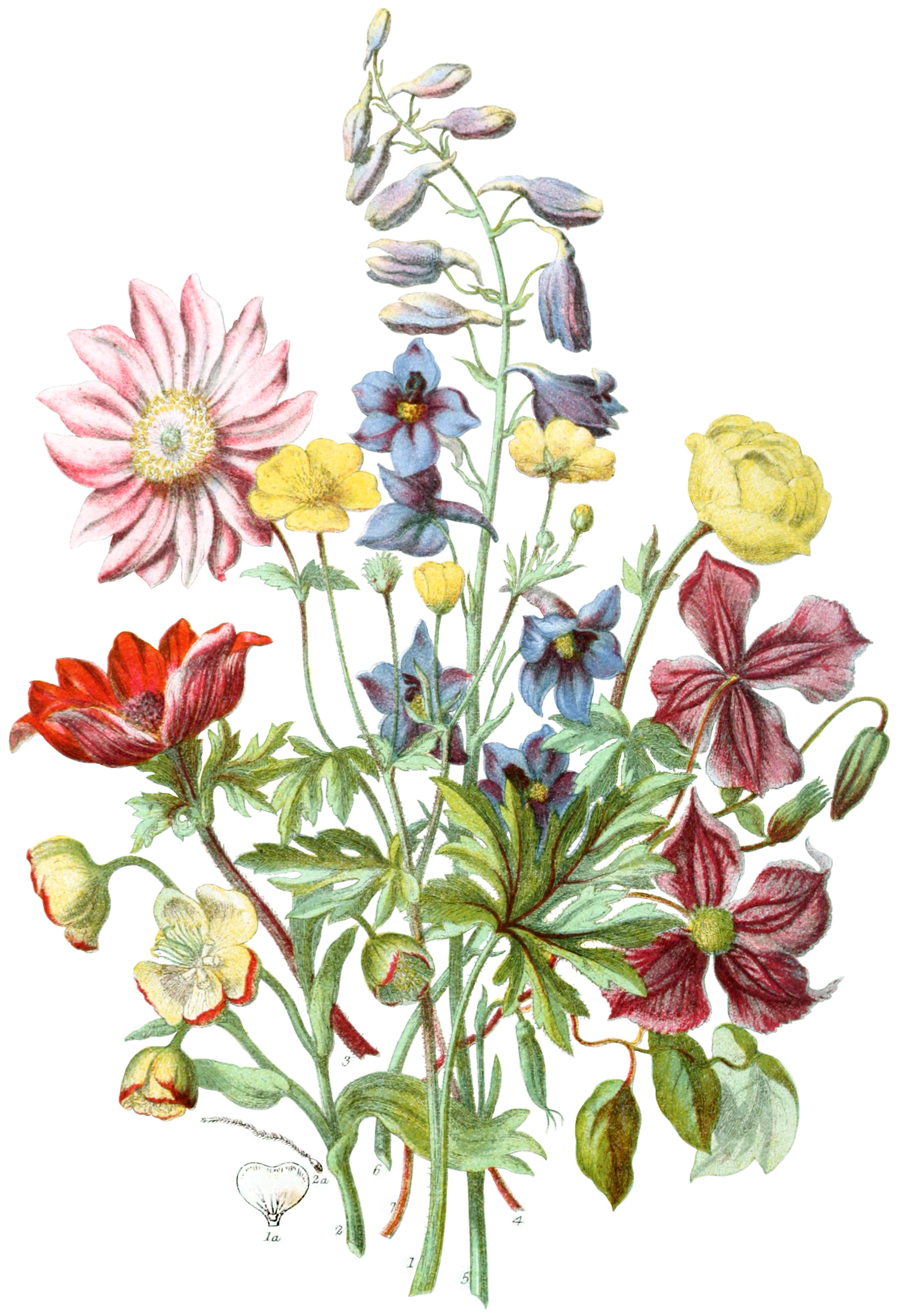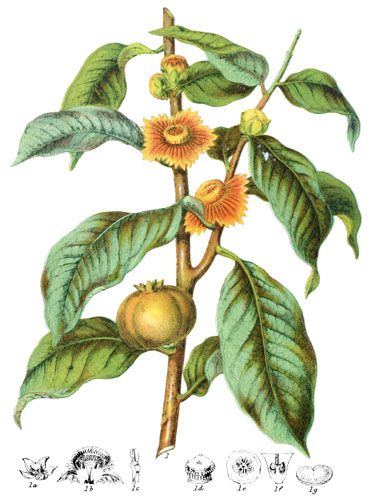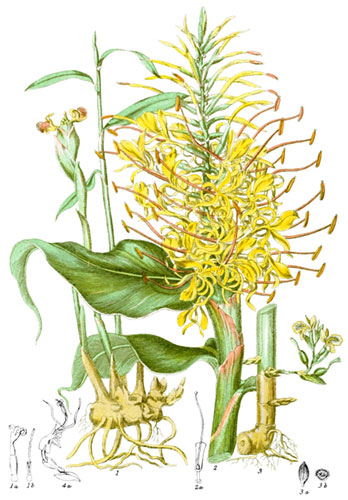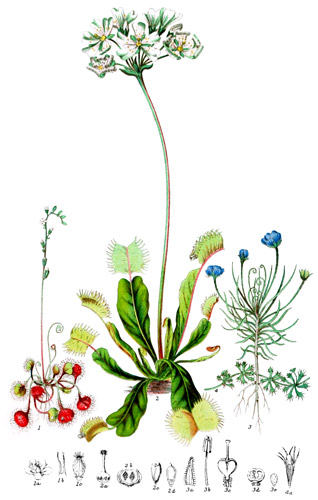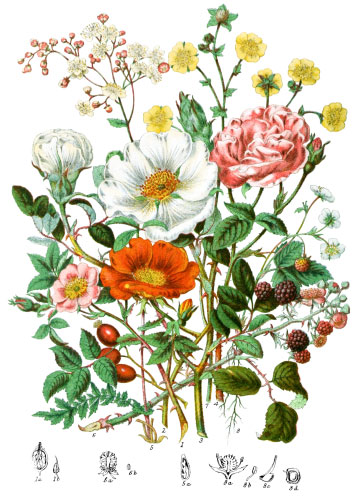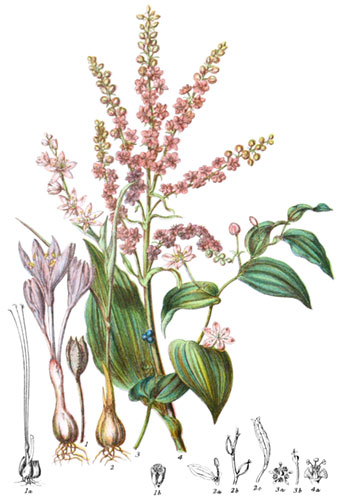Key characteristics
This Order consists of herbs and shrubs, the climbing species of Clematis being almost the only instance of a woody stem. The leaves grow either opposite or alternate on the stem; they are generally much divided. The leaf-stalks form 2 kind of sheath partly enclosing the stem. The flowers vary much in form, but in essential parts a great similary prevails throughout the Order. The petals usually five, one having sometimes a horned spur or nectary, as in Delphinium. The number of the petals varies from 3 to 15. The parts of the calyx also vary, and are sometimes coloured and form the actual flower, as in Hellebore. The stamens are many, placed below the ovary, which is composed of many seed-vessels of one cell each, or combined into one vessel containing many cells. The seed-vessel, when ripe, is either a cluster of several dry cells, as in Ranunculus, or a berry, with one or more seeds, as in Actea; or a pouch, with one or more valves, as in Larkspur. The seed has sometimes a feathered end, as in Anemone or Clematis.
Allied in some points with the Magnolia, and the Poppy tribe.
Acrid and even poisonous properties prevail in these plants.
Several of the most common and favourite flowers of our fields belong to this tribe.
Select plants in this order
Not all plants listed are illustrated and not all plants illustrated are listed.
- Ranunculus acris (1), the buttercup, has a brilliant golden flower, but the whole plant is acrid.
- R. Thora, of Germany, is said to have yielded the juice formerly used by hunters to poison their javelines when persuing wild animals.
- Ficaria is one of the first plants to appear in spring, adorning a hedge-bank with its glossy leaves and bright star-like flowers.
- R. aquatilis, the white crowfoot, is frequent in ponds or streams; its leaves rounded above the water, divided into fine segments below.
- R. bulbosus, of England, grows also on the Himalayas.
- R. asiaticus affords the numerous varieties of double flowers cultivated in Holland for our gardens.
- The black berries of Actea spicata, the baneberry of orkshire and Scotland, are poisonous, although the roots are used medicinally.
- Aconite and other species yield medicine in India, and in North America.
- Hellebore (2) was known and used in ancient times.
- Many of our early garden flowers belong to this tribe.
- The delicate Hepatica, with its triple leaf.
- The Christmas Rose, or white Hellebore.
- The Chinese Peony; and the Chinese Anemone (4), lately brought from China, where it is planted on graves.
- Larkspur and Aconite also produce several beautiful varieties, flowering abundantly.
- The wood Anemone abounds in sheltered copss in spring.
- Anemone pulsatilla is seen on chalk downs and pastures in many parts of England, bearing soft purple flowers in April and May.
- Caltha palustris, Marsh Marigold, is one of the gay yellow flowers used formerly to adorn a maypole.
Locations
All this tribe requires a cool climate, and is widely dispersed in all suitable places; in the tropics on mountains. The greatest portion of these plants are in Europe. North America has many. R. acris and others grow in Iceland and Lapland; Trollius europæus in Norway. One species was found in Melville Island, 75° N. Lat. About 100 species belong to the Himalayas, R. bulbosus of England amongst them, but more hairy. A beautiful white Clematis climbs over trees in New Zealand.
Legend
- Ranunculus acris, Buttercup. England.
- Petal with the nectary.
- Helleborus fœtidus, Bearsfoot Hellebore. England.
- Anemone coronaria, Poppy anemone. Levant.
- Anemone japonica. China and Japan.
- Delphinium elatum, Bee Larkspur. Siberia.
- Trollius euopæus, Globe flower. England.
- Clematis viticella, Virgin’s bower. Spain.
- Seed of Clematis vitalba, Travellers’ joy. Hedges, England.*
*7a was labled as 2a in the original illustration.
Explore more
Posters
Decorate your walls with colorful detailed posters based on Elizabeth Twining’s beautiful two-volume set from 1868.
Puzzles
Challenge yourself or someone else to assemble a puzzle of all 160 botanical illustrations.
